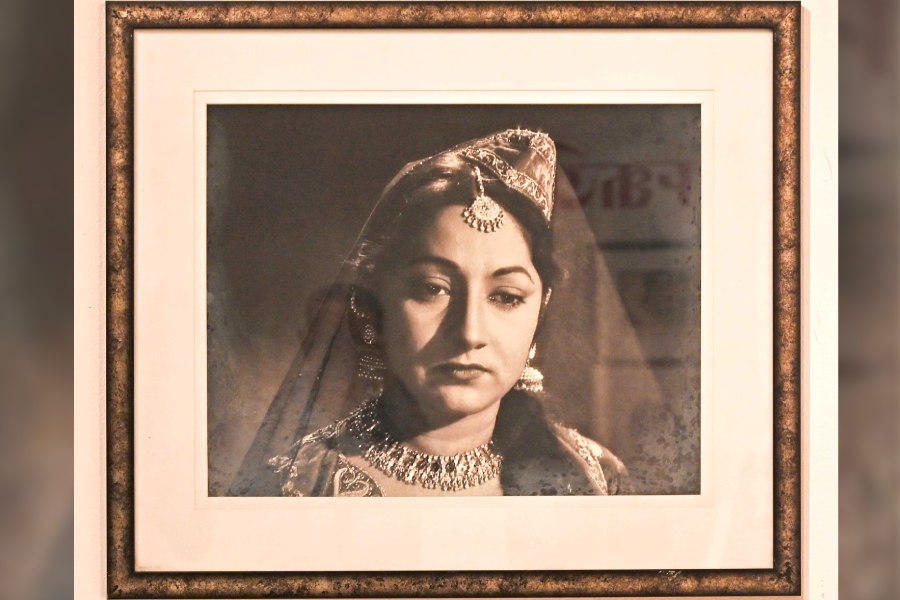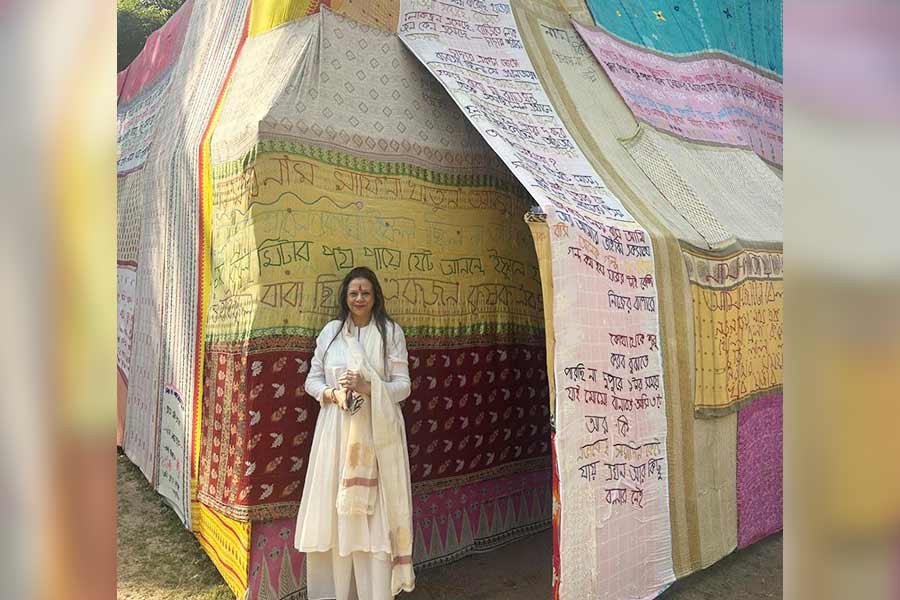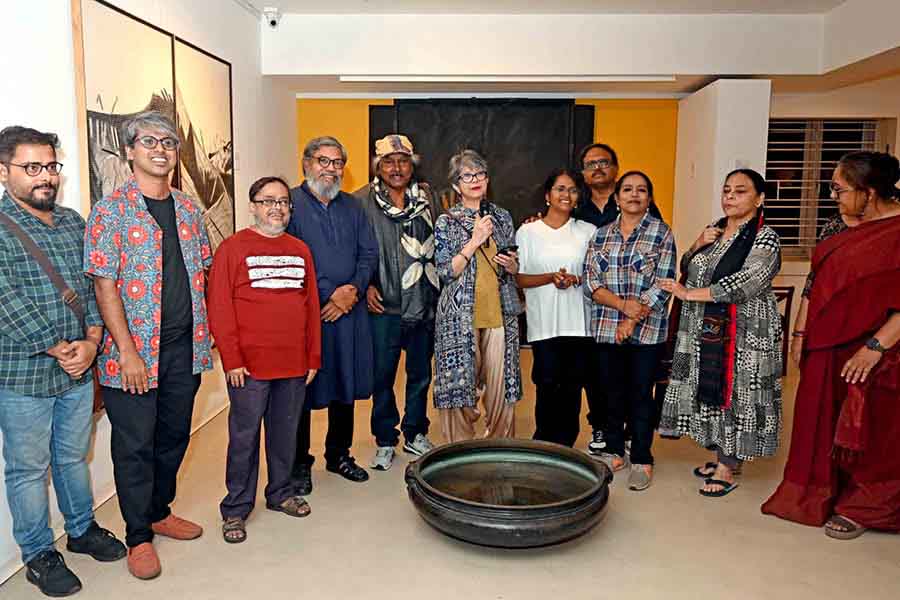Arundhati Devi stood apart in the vibrant tapestry of Bengali cinema for her intellectualism and artistic conviction. Arundhati was more than a celebrated actress. She was also a pioneering director, producer, singer (she had sung for Rabindranath Tagore and MK Gandhi), radio artist, and writer. Despite her talents and success, Arundhati deliberately distanced herself from the glamour and glitz of the film industry, choosing instead to pursue intellectual fulfillment and creative liberation. Her refined sensibilities and commitment to nuanced art made her an enduring figure in Indian cinema. Uttam Kumar, a co-star of Arundhati, always addressed her as “madam”.
To commemorate her remarkable career and contributions, the Kolkata Centre for Creativity (KCC) is hosting the Arundhati Devi Centenary Exhibition, curated by Tapati Guha Thakurta and Mrinalini Vasudevan (Arundhati’s great-niece). Visitors can embark on guided tours of the exhibition, which explores Arundhati’s life, artistic achievements and lasting impact. Walkthroughs, led by Vasudevan herself, began on December 24 and will continue until January 6, offering a deep dive into letters, notes, film posters, rare photographs and other memorabilia connected with Arundhati.
‘It’s fascinating how someone with only a handful of films became such an important figure’
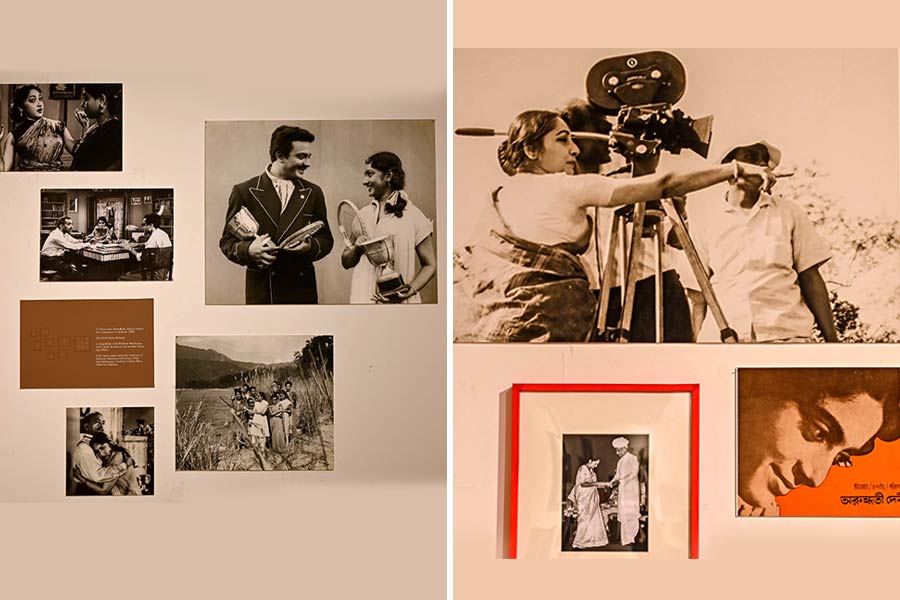
Many of Arundhati Devi’s characters and her screen presence reflected the shifting cultural and societal landscapes of the time
When My Kolkata visited the exhibition on December 27, the centenary celebrations included a screening of Chalachal (1956), one of Devi’s most iconic films, followed by a discussion titled “The Actress in Bengal in the 1950s and ’60s”. Scholars Madhuja Mukherjee and Trina Nileena Banerjee reflected on Arundhati’s cinematic journey and her distinctive screen presence.
Mukherjee, a filmmaker and film studies professor at Jadavpur University, noted that Arundhati, despite her relatively short filmography, held a special place in Bengali cinema. “It’s fascinating how someone with only a handful of films became such an important figure,” she said, explaining that Arundhati’s roles frequently navigated the complexities of post-Partition Bengali life, especially the evolving dynamics of modernity and relationships. Mukherjee described Arundhati’s screen persona as an intriguing blend of intellect and depth, adding that it reflected the shifting cultural and societal landscapes of the time.
Her characters conveyed a rare intellectual autonomy
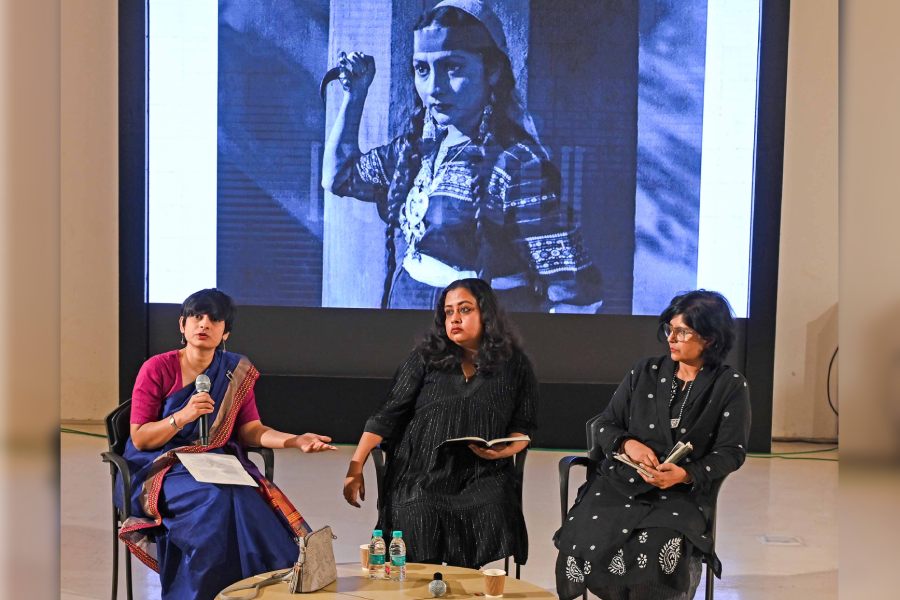
Mrinalini Vasudevan, Trina Nileena Banerjee and Madhuja Mukherjee
Banerjee, an artist and professor at the Centre for Studies in Social Sciences (CSSS), shared a personal connection to Arundhati’s work. “Growing up, I remember my grandmother was a huge fan of Arundhati Devi, and we watched her films whenever they were on television,” she said. Banerjee explained how Arundhati’s portrayals of women resonated with her even as a child, offering an alternative to the stereotypical femininity that often dominated Bengali cinema. She highlighted how Arundhati’s characters conveyed a rare intellectual autonomy, recalling moments from Chalachal where Arundhati’s character was simply thinking, her quiet contemplation creating space for viewers to see themselves reflected on screen.
Arundhati’s depiction of professional women was groundbreaking for her time. Banerjee discussed how her films explored the realities of working women, subtly weaving these narratives into the plot. She compared them to other films of the 1960s, like Satyajit Ray's Mahanagar (1963), where the female lead sells sewing machines and interacts with her husband's friend in a cafe, a public space where men and women engage with each other as equals. Banerjee observed that such portrayals were rare during Arundhati’s era and offered a progressive perspective on gender roles in public and professional spaces.
The session also featured excerpts from Arundhati’s essay “Cholochitre Obhinoy – Shilpo o Shilpi”, published in Anandabazar Patrika in 1960, offering insights into her philosophy as an artist. Arundhati’s writing revealed her commitment to acting as a craft and her refusal to succumb to the superficiality of fame.
